.
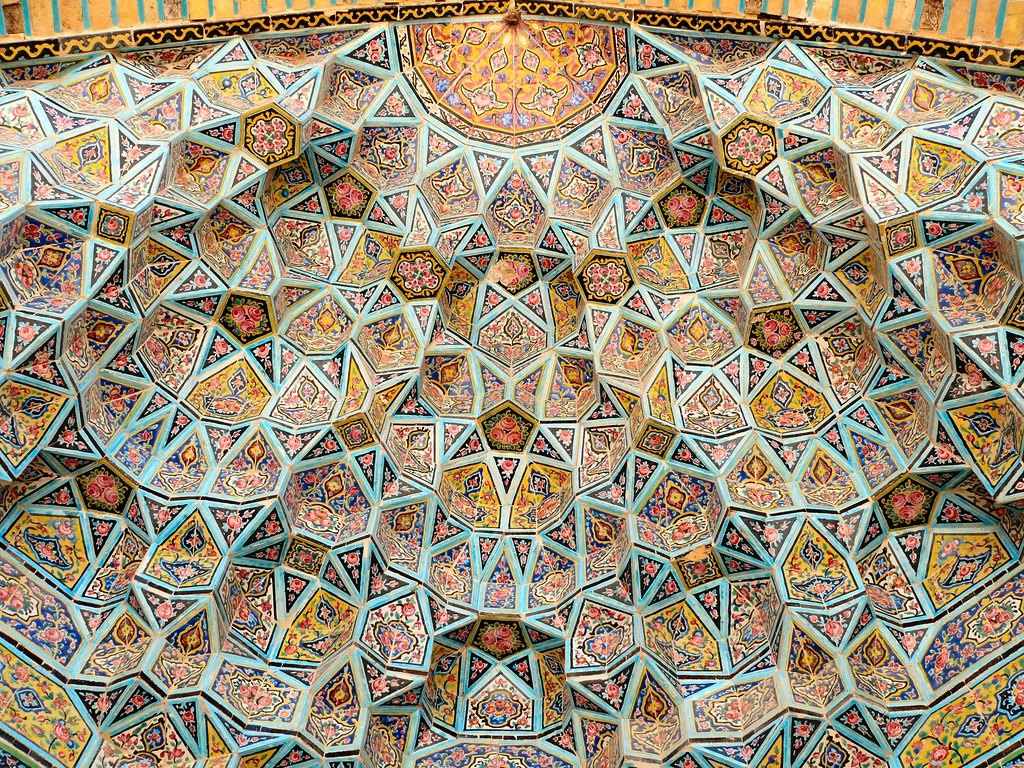
Another glance at heaven. A vault at the Nasr al Molk mosque at Shiraz: photo by dynamomosquito, 21 April 2008
Last Friday, in the big light of last Friday night,
We drove home from Cornwall to Hartford, late.
It was not a night blown at a glassworks in Vienna
Or Venice, motionless, gathering time and dust.
There was a crush of strength in a grinding going round,
Under the front of the westward evening star,
The vigor of glory, a glittering in the veins,
As things emerged and moved and were dissolved,
Either in distance, change or nothingness,
The visible transformations of summer night,
An argentine abstraction approaching form
And suddenly denying itself away.
There was an insolid billowing of the solid.
Night’s moonlight lake was neither water nor air.
Wallace Stevens (1879-1955): Reality is an Activity of the Most August Imagination, 1954
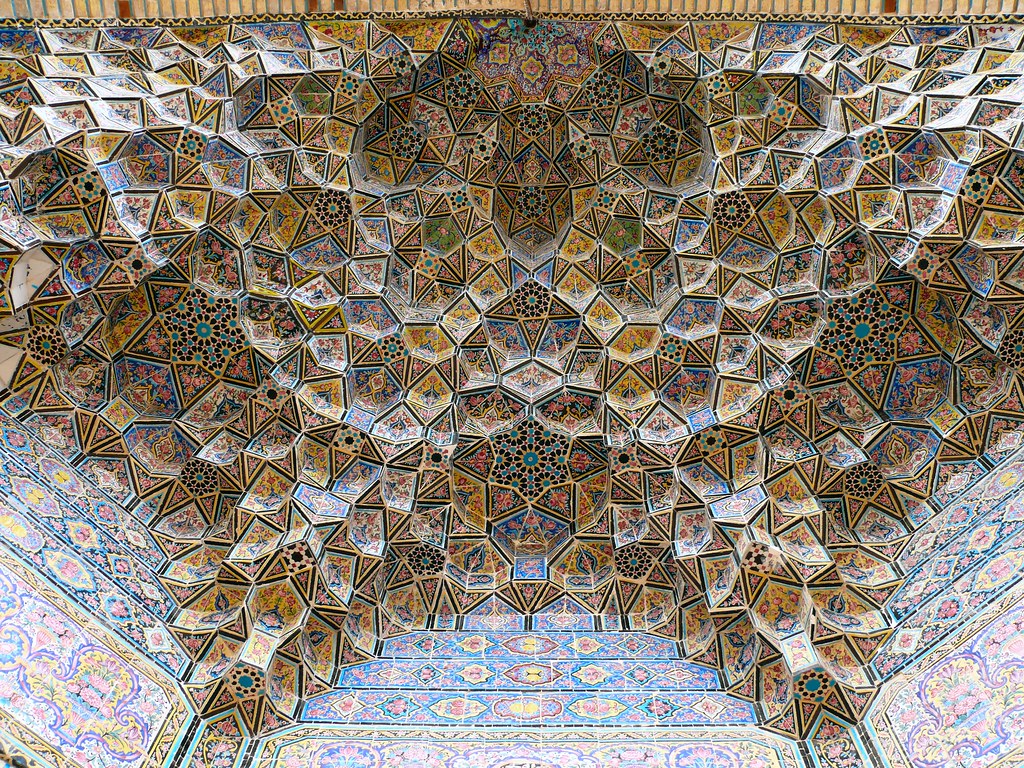
An idea of heaven. A vault at the Nasr al Molk mosque, Shiraz: photo by dynamomosquito, 13 May 2008

A touch of paradise. A colored vault at the Nasr al Molk mosque mosque at Shiraz: photo by dynamomosquito, 5 May 2008
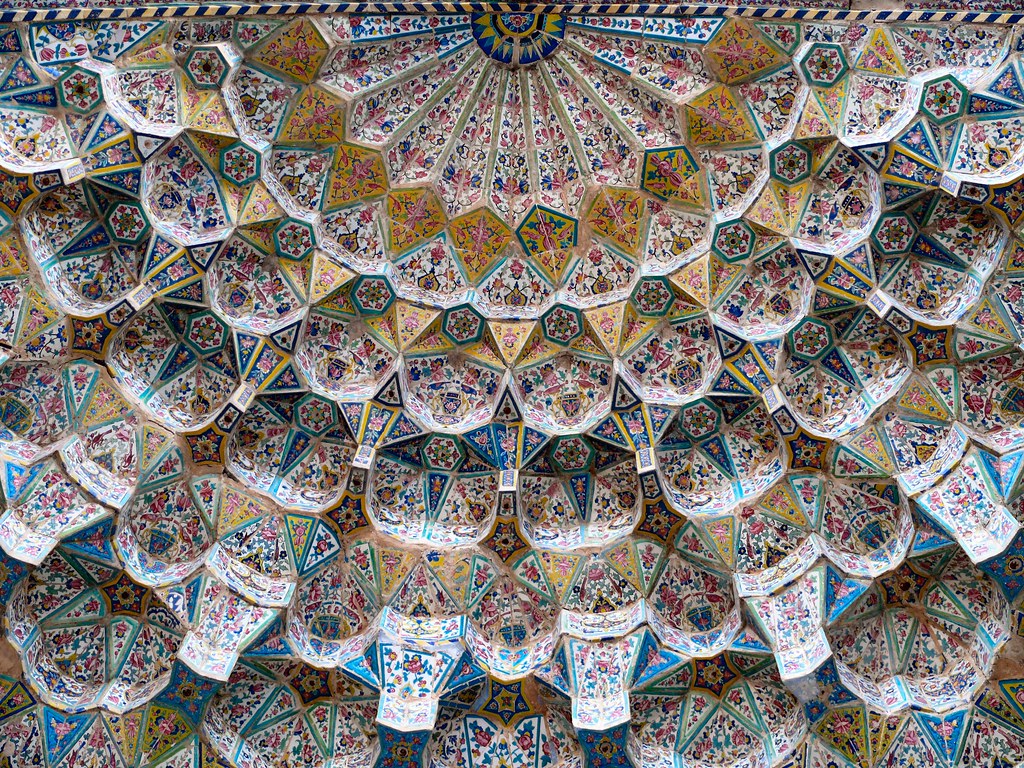
Facets of heaven. Front door ceiling of the Vakil mosque at Shiraz: photo by dynamomosquito, 29 April 2008
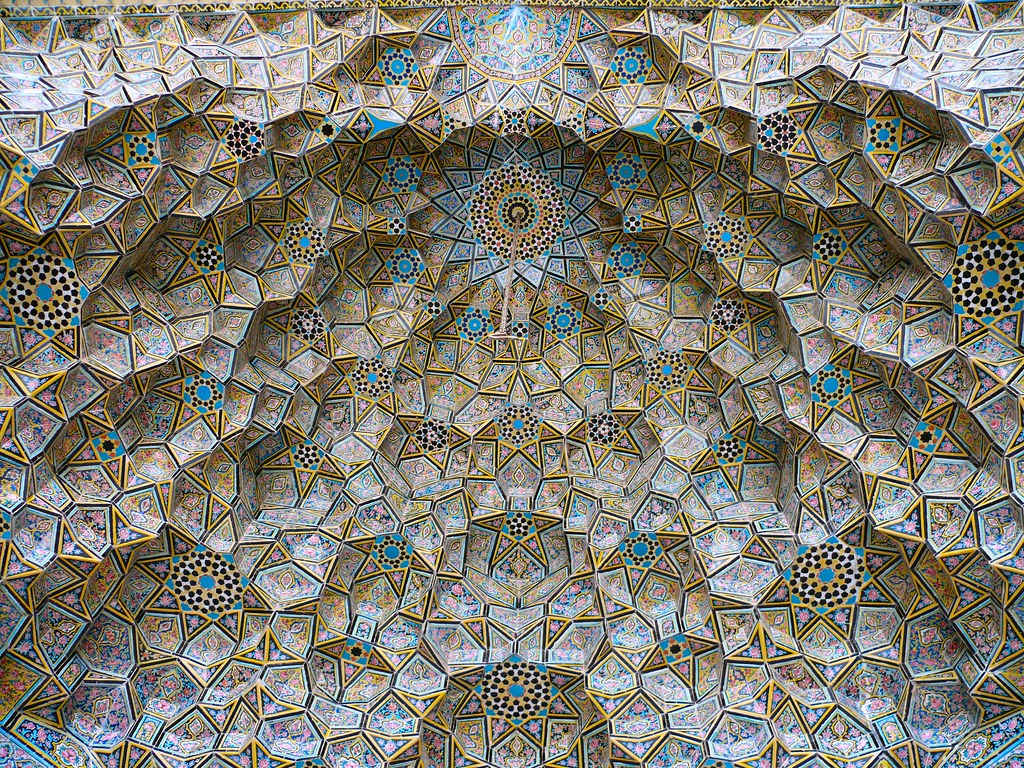
Cells of heaven. A vault at the Nasr al Molk mosque, Shiraz: photo by dynamomosquito, 29 April 2008
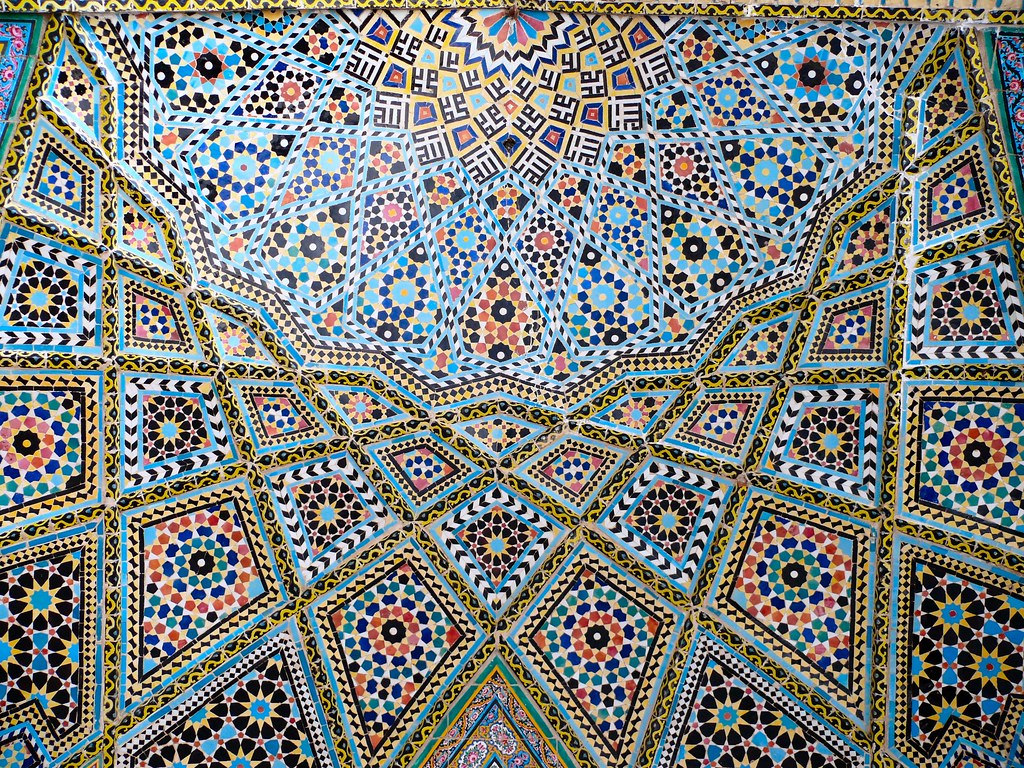
A glance at heaven. A vault at the Nasr al Molk mosque at Shiraz: photo by dynamomosquito, 21 April 2008
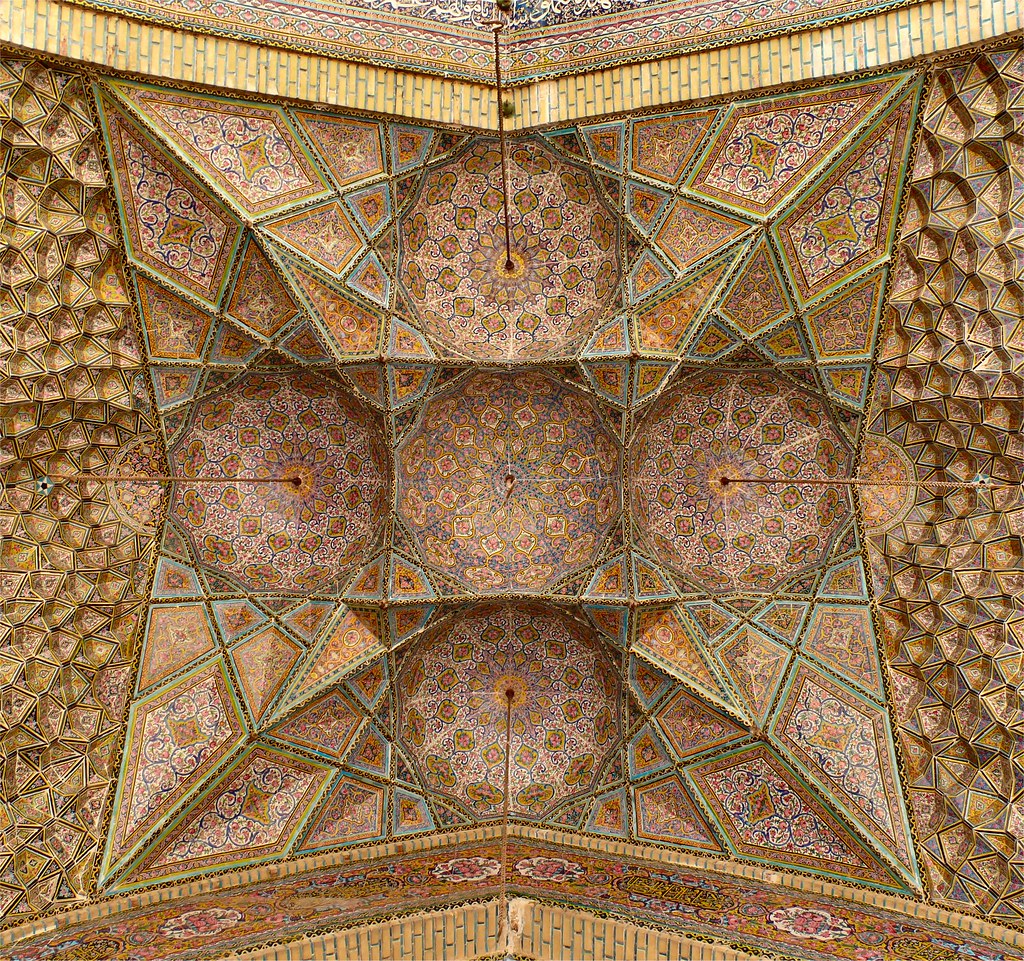
Ceiling.The ceramic tiled ceiling of a vault at the masdjed-e Nasr Al Molk at Shiraz. The use of the yellow color was an innovation of the Zand era. Later, under the Qajar rulers, the use of yellow was even extended to the point it became the dominant color for the ceiling, while their Safavid predecessors used the blue as the dominant colors: photo by dynamomosquito, 4 June 2009
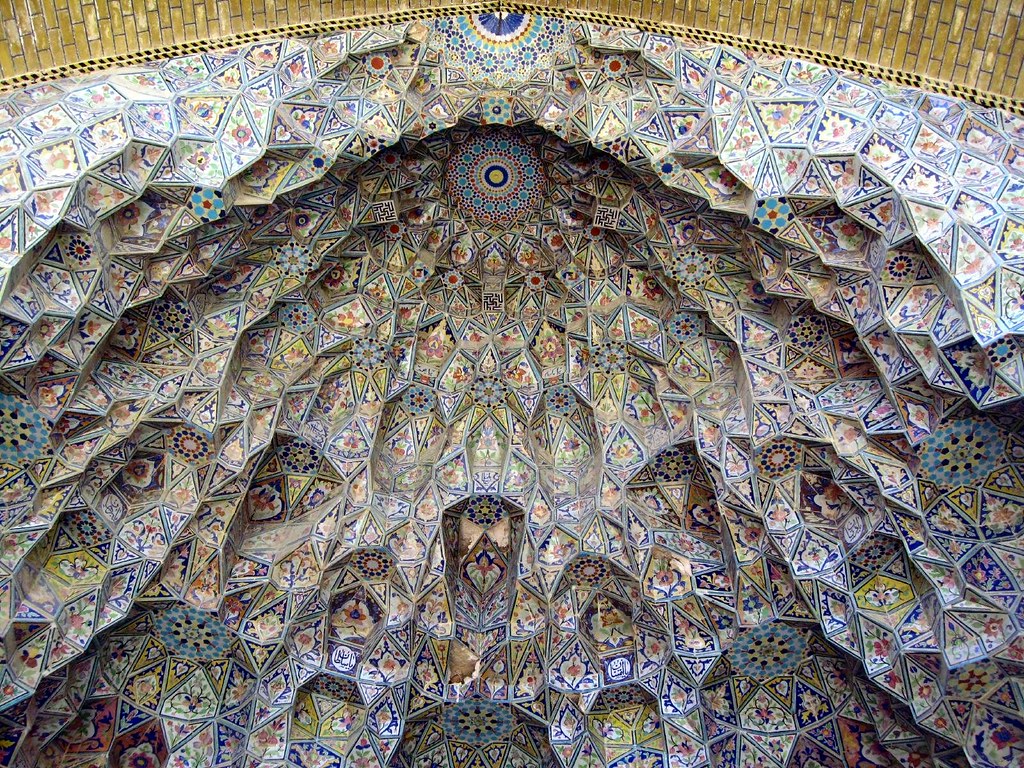
Jameh-ye Atigh Mosque, Shiraz: photo by Fulvio, 7 August 2007
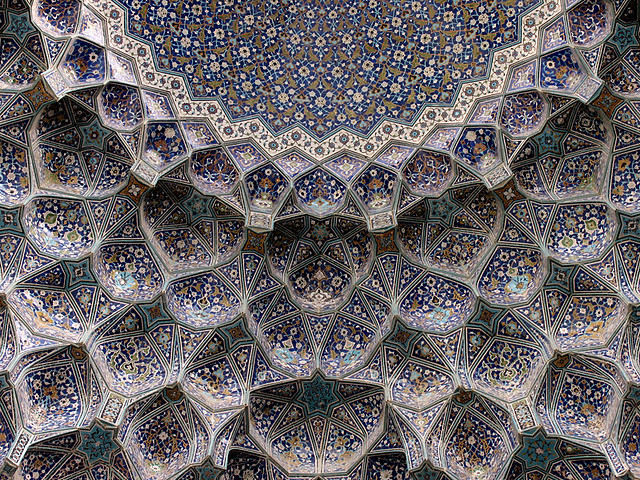
Imam (Shah) Mosque, Isfahan: photo by HORIZON, 18 May 2006

Facade of entrance arcade, Masjed-e Vakil Mosque (Regent's Mosque), Shiraz: photo by Martijn.Munneke, 6 February 2009

Imam Mosque (Masjed-e Imam), Isfahan: photo by Nick Taylor (indigoprime), 28 April 2006
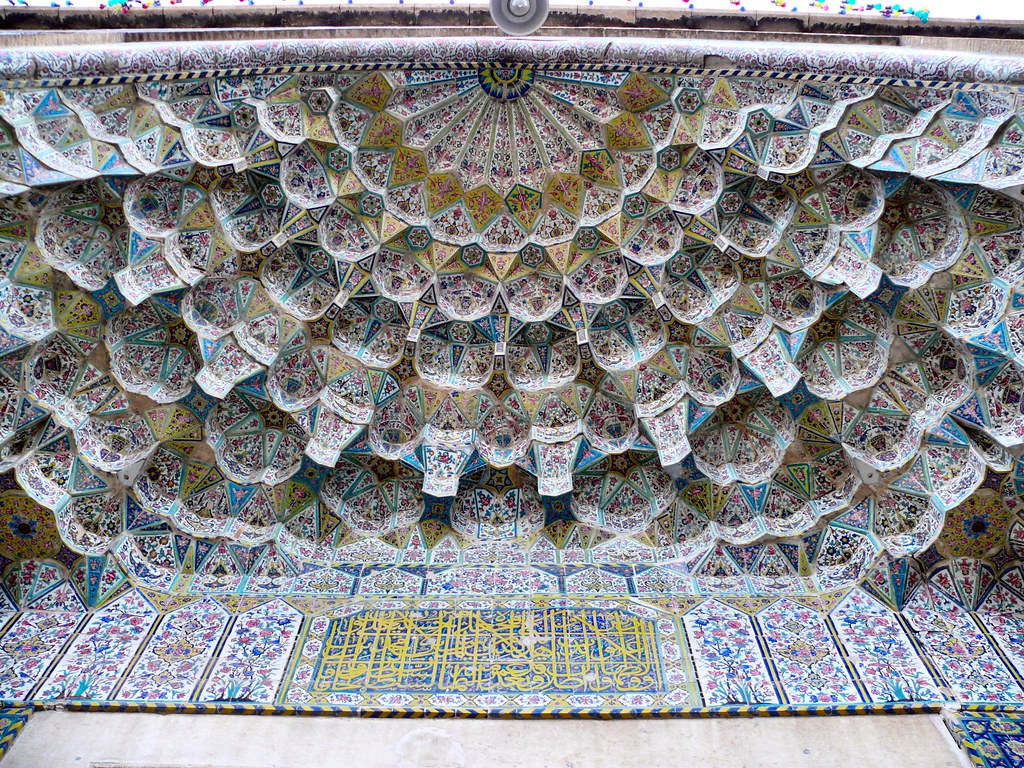
Bees' nests. Front door ceiling of the Vakil mosque at Shiraz: photo by dynamomosquito, 30 October 2008



10 comments:
Tom - What a beautiful rendering of the experience of driving at night Stevens gives us. The pairing with mosque photos is a beautiful way to visualize the "insolid billowing of the solid."
Thanks!
David
This poem unlike the previous I could find correspondence with .... the negotiation between abstraction on the one hand and materialism on the other achieved in a very understated way
The kind of decorative Architecture shown in the images on the other hand would drive me crazy in 5 minutes
Beautiful in every line. “As things emerged and moved and were dissolved . . .” I wonder if by "argentine" Stevens was thinking (or seeing) “silvery”? And trippy to the max, those clouds of tiles . . . each of them imagined by someone.
Here there’s been a sweetness to recent days: dry and cool, yet sunny, with just enough cumulus to give the sky some depth, a throwback, really, to a time when such weather was “normal".
Tom,
". . . abstraction approaching form . . ."
in these photos -- glance at heaven, idea of heaven, facets of heaven, cells of heaven, bees' nests
7.26
light coming into fog against invisible
ridge, song sparrow calling from branch
in foreground, sound of wave in channel
implicit subject not itself,
as with to go from it
is almost, looks like other
material, consequence
fog against invisible shoulder of ridge,
fog on horizon to the left of the point
The organism suffers itself to create such exquisite approximations. Steven’s poem of the “big light”. A master’s work. Very much appreciating here the blogger’s steady search for gifts of distant, different makers, to glimpse, capture it. Cells of heaven. Argentine forms neither water nor air. There is an “insolid billowing of the solid” “suddenly denying itself away.”
Harris Schiff
...approaching form/ and suddenly denying itself away.
That such beauty should be driven in great part by a prohibition on the image...
I'm not sure why but this came to mind
"No motion has she now, no force;
She neither hears nor sees;
Rolled round in earth's diurnal course,
With rocks, and stones, and trees."
Something like these ecstatic geometries can be heard here.
Yes, certainly, Stevens meant "silvery". But also I think, "luminous". A kind of shine on all things. Seen yet not quite seen, but felt.
And it's that conjuring of the inchoate, not-quite-verbal, impalpable, proprioceptive, kinesthetic, nonEuclidean nature of things that can't but shine out in this late poem -- the remarkable evocation of
... a glittering in the veins,
As things emerged and moved and were dissolved,
Either in distance, change or nothingness,
The visible transformations of summer night,
An argentine abstraction approaching form
And suddenly denying itself away.
There was an insolid billowing of the solid...
neither water nor air.
I had first thought to accompany the poem with images by Hopper... night roads, Connecticut... but then, with further dwelling upon that presque-vu insolid billowing of the solid, arose a recurrent and all too familiar post-accident yawing sensation of seasickness (vertigo), a sense of spinning upon dizzying heights, a dread of looking up...
This seems one of that brilliant handful of late poems in which, having shed the whimsy and the decorative brilliance, Stevens seems to be anticipating death in the most acceptable way possible, that is, by declining to trace its dark outlines, looming up nearer in the rearview.
The actual title of the poem is important: Reality is an activity of the most August imagination
Post a Comment